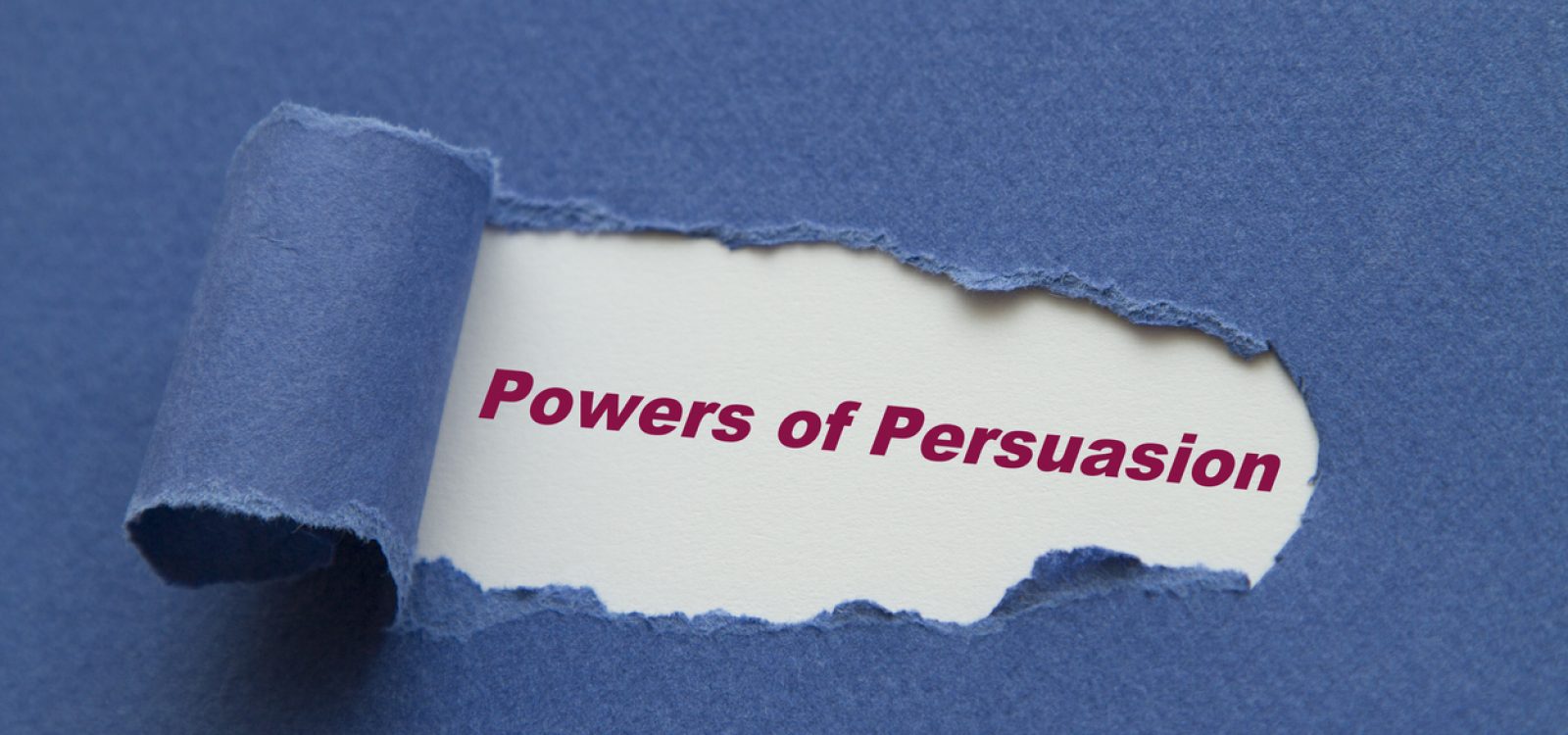
Art of Persuasion – part two
In the previous article, we challenged the popular misconceptions of persuasion as a “battle of the strongest arguments”. The most successful persuaders are not necessarily those who present the most well researched facts and figures, but those who can execute a particularly effective persuasion strategy with their target audience, which can be summarised in these 4 simple steps.
Art of Persuasion
“Words are, of course, the most powerful drug used by mankind”
– Rudyard Kipling
Conger (1998) highlights a more effective persuasion strategy that senior business leaders have used as successful change agents in their organisations:
- Establish credibility
- Frame for common ground
- Present compelling evidence in vivid language
- Connect emotionally
The first step is to establish credibility to allow your audience to trust what you are saying. Credibility can arise from either subject matter expertise or personal relationships with your target audience members. Only when you have a successful track record, then people will pay attention to what you have to say. In fact, Nye (2012) argues that due to the cognitive overload of the Information Age, “credibility is now the scarcest resource”.
The second step requires framing your presentation in terms of common ground by identifying shared benefits. At the heart of framing is a solid understanding of your audience. Effective negotiation is all about creating and claiming value, which is a process of give-and-take. To persuade meaningfully, you must not only listen to others but also incorporate their perspectives into a mutually beneficial shared solution.
The third step is about how you present your evidence, not just what you present. “Numbers do not make an emotional impact, but stories and vivid language do. Research shows that listeners absorb information in proportion to its vividness.” A boring shopping list of facts and figures will send your audience to sleep, but instead lively stories, metaphors, examples and analogies make your presentation come alive.
The final step is to connect emotionally with your audience on a personal level. You need to listen to your audience as much as your audience listens to you. If you show too much emotion, your audience might question your clearheaded-ness. If you show too little emotion, your audience might question your commitment to the idea that you are championing. The key is to find the right emotional wavelength for your audience.

Persuasion is not just for salespeople and politicians. Actuaries and data scientists need to present their work persuasively for maximum impact and galvanise their audience to take action. Actuaries, with mostly technical backgrounds, can tick the boxes for (1) Credibility and (3) Evidence, but can improve on (2) Frame for common ground and (4) Connect emotionally. Actuaries need to establish a solid base of trustworthy personal relationships, effectively dramatize the impact of their work, and connect with their audience on the right emotional wavelength. We can even represent this mathematically with the Venn diagram in Figure 2.
Think Win-Win
“The best way to defeat an enemy is to make him a friend” – Abraham Lincoln

Perhaps the toughest test of persuasion is a hostage negotiation exercise, which is quite literally a life-or-death situation. Thompson & McGowan (2014) reveals the skills required for the New York Police Department (NYPD) Hostage Negotiation Team, based on their 35 years of service in the NYPD and personal experience in handling over 1,500 hostage incidents. Their motto “Talk To Me” epitomises their attitude to always keep communication open, which builds trust, rapport and empathy. This allows the negotiator to influence the hostage-taker to re-evaluate their crisis situation and make their own decision to choose a peaceful resolution, rather than a violent one.
The word-cloud in Figure 3 summarises the main themes of communication during crisis situations. They conclude with “the most valuable tool that law enforcement officers can have is often not something on their belt or that they can carry. Rather, their ability to communicate carries a much greater weight and influence that when used effectively, demonstrates respect, emits calm, builds rapport and trust, displays empathy, and can develop a bond with a total stranger that moments ago was consumed by a crisis with no way out.”
Notice that effective communication depends on how you say things, as much as what you say. This process of crisis communication emphasises (2) Frame for common ground and (4) Connect emotionally. Instead, a hard-line negotiator who follows the old myths of persuasion with a rigid process of logical arguments, persistence, and resisting compromise will have less room to manoeuvre, and thus be less likely to succeed.
Conclusion
In conclusion, the secret to persuasion is a thoughtfully-crafted argument, presented vividly with strong evidence or data, and aimed at a direct personal impact tailored to your audience. Whether you are persuading in a hostage negotiation exercise, or persuading a 5 year old child to eat their vegetables, if you can’t change their mind, you can try changing their mood. Even though you might not be able to control the outcome, you can always control the process of human interaction and communication.
As this article itself is an exercise in persuasion, I hope I have persuaded you that the principles of persuasion, as the language of business leadership, can be understood and utilised more effectively to bring about change, both big and small.
References
Cialdini, Robert (1984) “Influence: The Psychology of Persuasion” HarperCollins
Conger, Jay (1998) “The Necessary Art of Persuasion” Harvard Business Review
(This is the primary reference with most concepts summarised from this article)
French, John & Raven, Bertram (1959), “The Bases of Social Power” Studies in Social Power
Heinrichs, Jay (2007) “Thank You For Arguing” Three Rivers Press
Nye, Joseph (2012) “China’s Soft Power Deficit” Wall Street Journal
Thompson, Jeff & McGowan, Hugh (2014) “Talk To Me: What It Takes To Be An NYPD Hostage Negotiator”
https://www.mediate.com/articles/ThompsonJ11.cfm
CPD: Actuaries Institute Members can claim two CPD points for every hour of reading articles on Actuaries Digital.






